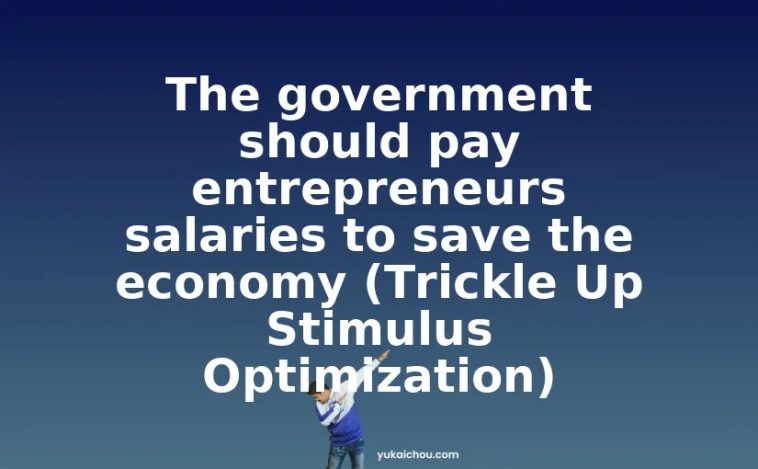Donald Trump’s first day in the Oval Office was inundated with a deluge of executive orders; yet one specific decree amongst the multitude caught my attention. Its title is ‘Establishing and Implementing the President’s Department of Government Efficiency,’ an initiative propelled by the influential entrepreneur Elon Musk. Notably, the acronym for this venture is DOGE, and its chief objective is to reduce government expenditure by potentially a couple of trillion dollars. Previously promoted as an external entity, this command now integrates DOGE into the existing formal government framework by incorporating it into the United States Digital Service (USDS), an agency formerly under the Office of Management and Budget.
Transforming the USDS into the US DOGE Service implies a few significant implications. Primarily, the remodeled agency’s head will establish a more direct connection with the president by reporting to the chief of staff. Secondly, this restructuring redirects the erstwhile mission of the USDS, which was crafting cost-effective and user-friendly software for diverse government sectors, towards sustaining Musk’s futuristic vision. The idea somewhat mirrors a government-authorized version of a SPAC, a speculative financial endeavor that guided Truth Social into the public market without the necessity for revealing a concrete business strategy to stakeholders.
At first, the reformation appears moderately surprising, as DOGE seems less extensive than its initial grandiose proposition. This revamped version is centered primarily on economizing through the optimization and updating of the government’s vast and convoluted IT infrastructure. There is considerable value to be preserved here, however, not to the tune of trillions as was once proposed. Despite this, whether or not Musk will assume the role of DOGE administrator remains unclear, as it might not live up to his penchant for grand ventures.
Musk allegedly advocated for this model as a mechanism to weave DOGE into the political fabric of the White House. Within the Executive Office Building, numerous pink Post-It notes symbolize their claims to expanded territory, even surpassing the domain currently occupied by the USDS. One of these coveted locations includes the office of the erstwhile chief information officer. These indications could suggest that this operation might serve as the springboard for a more extensive endeavor aimed at modifying policies and purging entire departments.
One certainty is evident through these changes: it marks the end of the United States Digital Service in its former incarnation and inaugurates a new, perhaps hazardous epoch for the USDS. The agency, now over a decade old, was conceived from the task force entrusted with rectifying the initial fiasco surrounding the Healthcare.gov website, which almost led to the downfall of the Affordable Care Act. This fearless group of volunteers set the precedent for the organization, a compact aggregation of coders and designers employing modern techniques to enhance governmental technology’s accessibility and efficiency.
Traditionally, the USDS embarked on projects that were bogged down by colossal contracts and languished unfinished, delivering superior results within weeks. The USDS operatives collaborated closely with permanent IT department employees, learning from one another and growing both as individuals and as a team. A benchmark project that the USDS undertook involved reconciling the DOD military medical records system with the differing systems utilized by the VA.
The USDS’s modus operandi mirrored a deeper cultural phenomenon, with its affinity for geek culture and advanced technology acting as almost a badge of honor. Through astute political maneuvering, the USDS maintained its operations. The agency’s deputy director managed to secure the support of Trump’s in-house problem-solver, and the subsequent four years bore witness to a delicate balancing act. It was a time of highlighting the agency’s accomplishments without drawing unnecessary attention to its endeavors.
Despite this, by the culmination of Trump’s term, the impact of these endeavors began to wane. Still, the USDS demonstrated resilience and adaptability. Even so, despite several concerted efforts, the agency was unable to persuade Congress to supply it with permanent funding. With Trump’s return to office and his pronounced intention to curtail government spending, there was speculation that the USDS would dissolve.
This makes the transition into DOGE somewhatof a mixed blessing — on the one hand, the rebrand affords the agency more formal recognition and a reliable budget. However, questions remain regarding the logistics of merging the two entities. The executive order stipulates that in tandem with their regular responsibilities, the USDS director will also head a temporary organization specifically dedicated to furthering the President’s 18-month DOGE agenda.
While the details of this agenda are nebulous, the order does mention the enhancement of software, systems, and infrastructure across governance in terms of both quality and efficiency. The directive includes a more concrete mandate to install teams of four individuals into each agency to aid in the implementation of the DOGE agenda. The order unambiguously states that all non-classified agency records, software, and IT systems should be made available to the aforementioned teams.
This reformation could lead to a departure from the original principles of the USDS, potentially replaced by an alternate idealistic perspective likely influenced by musk’s distinct approach to problem-solving. Maybe artificial intelligence will be touted as the superior solution. This could herald improved effectiveness and functionality in government IT operations.
However, the true impact of these changes remains to be seen. If optimally managed, this new initiative could untangle the baffling complexity of government IT. Conversely, if poorly executed, these changes could resemble a destructive parasite, causing more harm than good to its host. The real test will be in the execution and subsequent impact of these policies on the efficiency of government operations.

